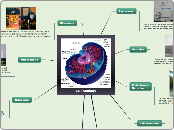Ali's CSC101 Knowledge Base
very impressive! Great start.
Ch. 2 System Processing
Future Trends
Nanotechnology
focuses on building computer components at the individual atomic and molecular levels.
Optical Computers
possiblity
Quantum
possibilty
A view
Scientists work on many new stratigies to develop the computers, such as pipelining, multiprocessing, parallel processing.
ways to develop is upgrading internet connection, using seconnd hard drive, etc....
How the CPU works
system clock
synchronizes all of the computer’s activities.
Machine Cycle
The CPU processes instructions in a sequence called a machine cycle, consisting of
four basic steps.
bus interdace unit
allows the various parts of the CPU to communicate with each other.
decode unit
decodes the instructions input into the CPU,
internal cache stores frequently used instructions and data
The prefetch unit
requests data and instructions before or as they are needed
Control Unit
directs the flow of electronic
traffic between memory and the ALU/FPU and also between the CPU and input
and output devices.
ALU
arithmetic/logic unit
which performs integer arithmetic and logical operations on data
FPU
floating point unit
performs decimal arithmetic
Inside the System Unit
Ports
used to connect peripheral devices to the computers
Expansion Buses
include PCI, PCI Express (PCIe) bus, Universal Serial
Bus (USB), and FireWire
Frontside Bus
connects the CPU tothe I/O bridge, which connects the CPU and memory to the rest of the bus architecture.
Memory Bus
moves data between the CPU and RAM
Bus
electronic path along which bits are transmitted.
ExpressCard Modules
used to add functionality to the computer
Expansion Slots
into which users can insert
expansion cards to give the computer added functionality.
Memory
refers to chip-based storage. it contains 3 main things
Register
memory built into the CPU chip to hold data before or during processing.
RAM
twp types of Random Acess Memory, which is repsonsible for running programs temporarily
Nonvolatile
still under development
Volatile
controls programs temporarily
ROM
Read only memory. a type of nonvolative memory that stores nonerasable programs.
CPU
CPU is responsible for controlling the speed of the computer and it deals with many processing operations.
CPU chips differ in many respects, such as what types of computer the CPU is designed for, its clock speed, and word size
Different Types
i2 and i4. the higher, the better
the Motherboard
the main circuit board for a computer. it controls the CPU
Data and Program Represntation
Multimedia
Computers can play multimedia via binary-based code
translated to the machine language
then shown in the monitor
Storage
Calculated in B, KB, MB, GB, TB, PB, EB, and other possiblities.
Computers Language
Computer people refer to these 0s and 1s as bits.
Converting data to these 0s and 1s is called digital data representation.
The World is Flat
Flatteners 4, 5, 6
Flatteners 8, 9, 10
Ch. 4 Input and Output
Output Devices
Audio Output
Printers
Display Devices
Input Devices
Pointing and Touching Devices
Scanners and Readers
Audio Input
Ch. 3 Storage
Hardware
Storage System Characteristics
Storage Media
Random vs. Sequntial access
volatility
Ch. 1 Introduction to Computers
Computer Categories
Super Computers
high costs
government
A supercomputer is a computer at the frontline of current processing capacity, particularly speed of calculation.
http://en.wikipedia.org/wiki/Supercomputer
Why we Should Learn about Computers









